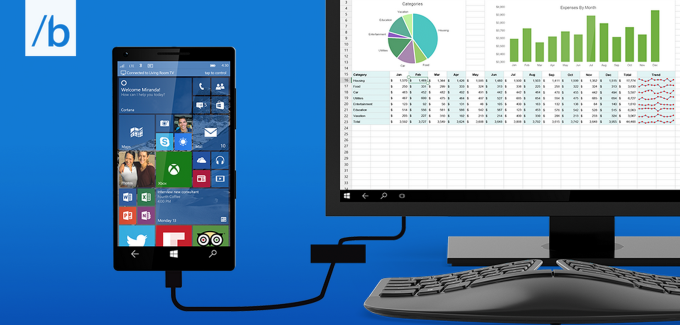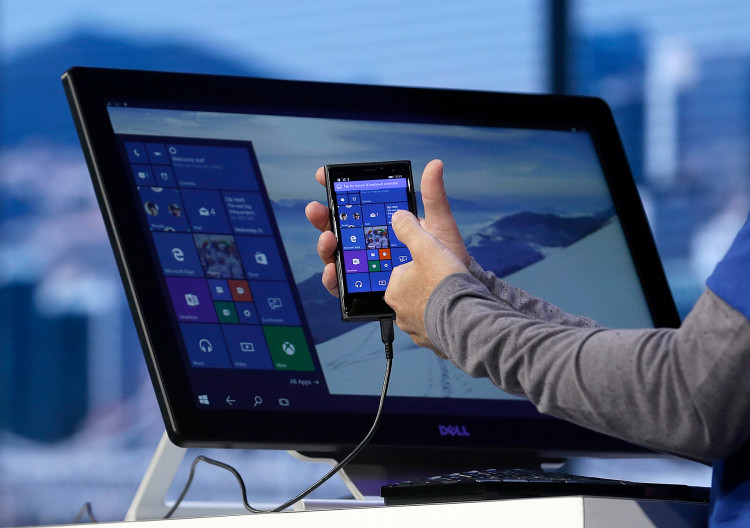Plugging a Windows 10 device into these components lets the tablet or mobile phone output a special, scaled up version of Windows 10 onto the monitor, scaled up from the phone’s display and compatible with plugged keyboard and mouse. The clever part of Continuum is its ability to treat mobile apps as if they were the Windows 10 desktop version when plugged in.
SEE ALSO: Apple Watch Shortage Caused By Part Failure
According to Belfiore this ability to emulate PC versions of apps on the go is because the code behind a lot of Windows 10 apps for PC and mobile is exactly the same. Demonstrating the Powerpoint app with a phone plugged into a monitor, Belfiore showed that the app was indeed exactly the same as the version on Windows 10 for the PC.
Cross compatibility is a huge selling point for Windows 10 – Microsoft is confident in three years it’ll drive the number of Windows 10 devices up to over one billion in use. Apps which are cross compatible require very little extra effort, as long as the can scale onto bigger displays.
Windows 10 app developers of course will be able to take advantage of this by making programs that run on mobile and PC with minimal additional input required. Meanwhile, business people can carry around their slideshows on their phone, plugging it into a projector if need be. Continuum scales and fits to every possible screen size.
SEE ALSO: Build 2015: Spartan is Now Microsoft Edge
Future applications of Continuum are just as exciting. Smartphones aren’t yet capable of producing quite the same power as modern desktop PCs and purpose built laptops – however they are getting remarkably close. Speed and power of components and battery life are still an issue, but future Lumia phones could sport the ability to function as Continuum focused handsets offering the best PC features.
Windows 10 is on the way at the end of the Summer, with some devices getting it a bit later on towards the Autumn. There are lots of devices to get the OS working on, but Continuum is most definitely going to arrive this year.
Via: CNET
Via: Techcrunch

